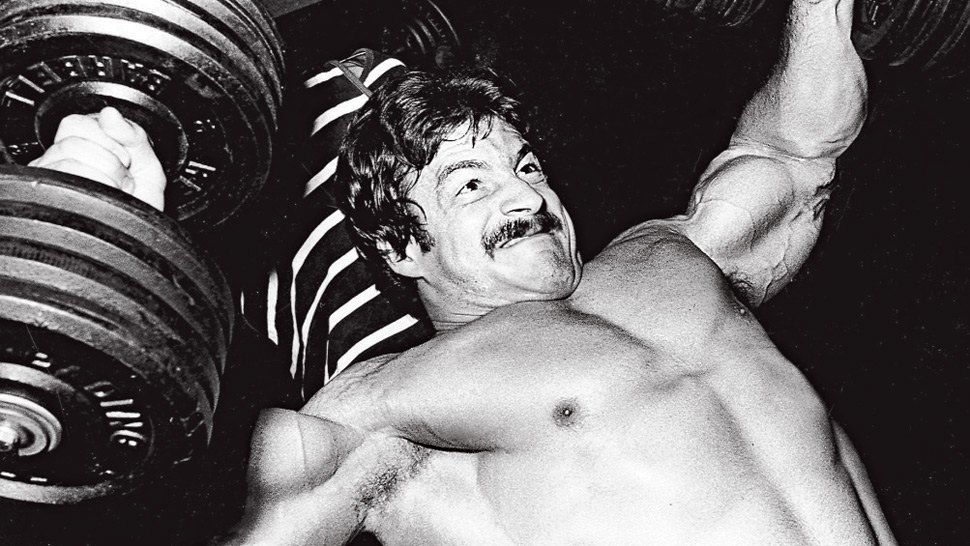
Click Here for Free Bodybuilding and Fitness Magazine Subscription
Can You Workout Too Hard
Your Testosterone Levels
Did you know that your testosterone levels start to decline in your mid 20's to early thirties?
Some sources cite test being down 30%+ when you hit your early 40's.
That sucks! That means you gain fat easier, your energy drains faster, and you can't put on as much muscle... not to mention the side-effects in the bedroom!
Well - the good news is, there is a lot you can do about it.
A lot of guys these days are opting for TRT - Testosterone Replacement Therapy.
I am much more a fan of boosting Testosterone levels naturally.
And that's why I am excited to share with you our Andro-Shock Test Booster.
It's the best test booster formula on the markter today - it is LEGIT.
Get some at https://www.trulyhuge.com/andro-sh.htm
You can also order Andro-Shock by calling 800-635-8970 or 503-648-1898, 10 am to 6 pm PST
Is It Possible to Train TOO Hard Using HIT?

Hardcore lifters love to talk about how intense their workouts are, because they know toughness in the gym will lead to a better, stronger body outside the gym. Proponents of high-intensity training (HIT) are especially plugged into the idea of near-death workouts because the entire protocol is built around the ideas of taking sets to failure and constant progression.
But is it possible to train TOO hard using HIT? Could you be doing more harm than good by pushing the limits all the time?
Let’s take a look at the factors involved.
The Importance of Intensity
Just about everyone involved with the iron game agrees that you need to lift hard in order to make progress. You have to increase your training loads over time if you want to get stronger, and you need to increase the demands on your muscles if you want to get bigger.
In order to stimulate those changes and make load increases possible, you must ask your muscles to work at or near their limit on a regular basis. No matter how you look at it, and no matter how you define the term, that type of work is intense.
The most straightforward way to ensure that you’re hitting the intensity levels necessary for growth is to train in a rep range that allows you to keep your muscles under tension for long enough to make them work hard — 30 to 90 seconds per set — and then take your sets to failure. That’s the basis of HIT and it’s very intense if done properly.
The Dangers of Intensity
High-intensity training can allow you to see quick, straight-line improvement, but it does come with risks. Unlike “conventional” training, HIT has you lifting slowly and infrequently, so the danger of acute injury is generally lessened, but others are lurking below the surface.
Among potential pitfalls of HIT are:
- Mental fatigue that builds with knowing you always have to beat what you did last time, either in terms of weight, reps, or both.
- Dreading the gym because of a looming lift — a big squat attempt, for example.
- Systemic fatigue caused by pushing every set to failure — and beyond — and not getting ample recovery time.
- Restlessness and lack of motivation caused by overall fatigue.
- “Near-death” experiences DURING your workout from severe oxygen debt and tired, shaking muscles.
All of these are very real outcomes of regular high-intensity training for some lifters, and they are, indeed, indications that you might be training too hard, at least in the context of your own recovery ability.
That doesn’t mean you need to throw out HIT entirely, though, because you can make some tweaks to keep your training humming along.
How to Avoid Burnout
Avoiding the drawbacks of HIT can be tough because you grow so accustomed to pushing the limits all the time. Still, here are some tips to help you keep growing over the long haul while avoiding intensity burnout:
- Don’t be afraid to change exercises or even full routines regularly. While you want to progress on each lift over time, that doesn’t mean you need to DO every lift all the time. Even Dr. Ellington Darden, who came up with the term “high-intensity training” back in the 1970s, advocates variety in his books.
- If you hit a plateau in an exercise, try a different rep range rather than grinding against your limit weight workout after workout.
- Limit “set extenders” to very occasional use. These include advanced techniques like drop sets, rest-pause sets, forced reps, and end-of-set cheating reps, and they can all lead to nervous system fatigue. In most cases, taking your sets to failure and then stopping will yield great results without the burnout effect.
- Make sure you get plenty of rest and good nutrition outside the gym.
- Cut down the number of sets you do in each session, or cut down the number of sessions you perform each week.
- Regularly stop at least some of your sets a rep or two short of true failure. This will still stimulate your muscles but will give your overall system a breather.
So, while it IS possible to train too hard with HIT, that doesn’t mean you have to flame out in your attempts to get big. It also doesn’t mean you need to flush HIT forever.
If you see your doctor to make sure you’re healthy enough for demanding workouts and then take precautions to avoid overtraining and mental fatigue, high-intensity training can take you a long way.
Want Even More HIT Information?
If you want to learn ALL about high-intensity training to figure out if it’s the right approach for you, be sure to check out https://www.getbulky.com/high-intensity-training.html.

